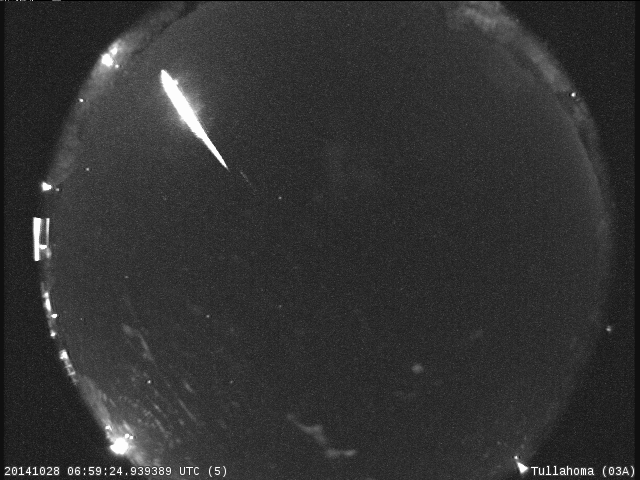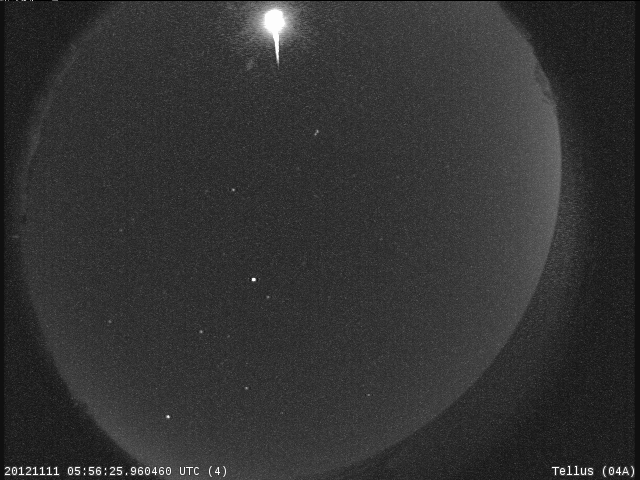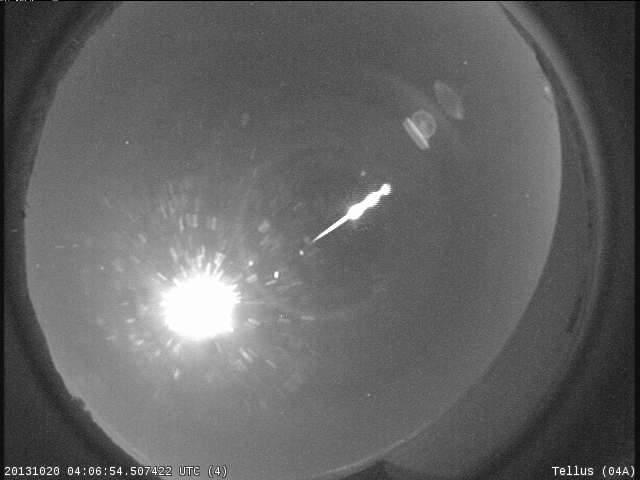Every year from September-November, the Earth passes through a broad stream of debris left by Comet Encke. The dust associated with the comet hits the Earth’s atmosphere at 65,000 mph and burns up, creating the Taurid meteor shower. Most years the shower is weak, and only a few Taurid meteors can be seen each night. Other years, the Taurids can put on a show.
This year, the Taurids may be more active than usual.
Bright Taurid fireballs may be more numerous this year, according to some scientists. Known as the Taurid “swarm,” these bright meteors are created when the Earth runs into a group of pebble-sized fragments from the comet that then burn up in the atmosphere.
“The annual Taurid meteor shower is going on right now, and we are seeing steady activity in our meteor cameras,” said Bill Cooke, lead for the NASA Meteoroid Environments Office. “Individuals should not be surprised if they see a bright meteor or fireball over the next few nights.”
Taurid meteors can be seen any time the constellation Taurus is above the horizon during the months of September, October, and November. The best time to look for Taurids is after midnight, when Taurus is high in the sky, and when the sky is dark and clear, with no moonlight to mask the fainter meteors. Given the behavior of past Taurid swarms, increased fireball activity may be seen during the last week of October and the first two weeks of November.





So is there at any specific time we should expect to see this Taurid storm? This is so exciting, do you have some advices for seeing this better?
I know you say after midnight on clear skies etc. but how can I tell the difference from a Tauris and a “normal” shooting star or meteor?
/ Nadia
Hi Nadia –
I checked with our Meteoroid Environments Office here at Marshall to get an answer to your questions. Dr. Bill Cooke said ” The Taurid swarm is a meteor outburst, in which the rates are above normal. It is not a meteor storm, in which case there would be over 1000 meteors per hour. Lie flat on your back under reasonably dark sky and look up – that’s all you have to do. Even in an outburst, there will not be many Taurids, but the ones you do see will be bright.A Taurid will appear to radiate from the constellation of Taurus the Bull, and move a little more slowly than a typical meteor.”
Thanks!
Kris
Is it possible to see this in daylight? There was something in the sky this morning. About 8:30a. I live in Washington.
Hi Becky –
I checked with Dr. Bill Cooke in Marshall’s Meteoroid Environments Office to get your question answered. He said ” Daylight fireballs are really rare. I doubt you saw a Taurid.”
Thanks!
Kris
I don’t know the constellations. How do I find the Taurid shower?
So is it posible that I saw one last night ?
There was a bright light in the sky, it stood there for a while . I’m in San Diego, CA.
We saw a huge meteor fire ball tonight around 9pm in Broadalbin, NY on Rebisz Road. It was so low I thought it was going to hit my neighbor’s house. We in the country, many trees, very quiet at night. It has a long tail. This is the very first time I have actually ever seen a FIRE BALL Meteor and so low! It was quite an amazing site!
Pretty good blog and fantastic and articles.beneficial layout, as share good things with excellent strategies and ideas.